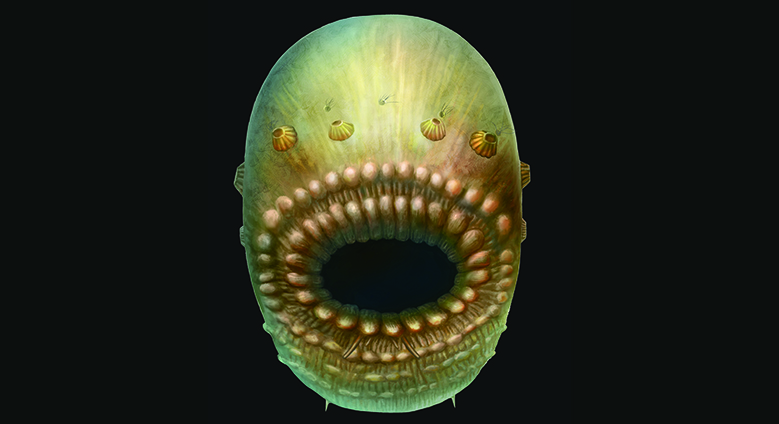

In a paper in Nature, scientists claim to have found humanity’s oldest known ancestor. This horrifying, bag-like sea creature lived about 540 million years ago and was recently dug up in China.
Technically, the oldest known fossils go way farther back, to about 3.5 billion years. But those were cyanobacteria, and although we’re related to them, those photosynthetic creatures are on a different branch of Earth’s family tree.
The new fossil, named Saccorhytus, appears to be the oldest deuterostome found to date. Deuterostomes are a group of animals that includes vertebrates (that’s us) as well as starfish and other echinoderms. The group is defined by how its embryos develop: the first opening that forms in each tiny ball of cells becomes the organism’s anus. It’s a glamorous family legacy, to be sure.
Saccorhytus was a tiny creature. To the naked eye, it would look like a millimeter-size black speck—in fact, scientists think it lived between grains of sand. It probably got around by wriggling. Interestingly, our sac-like ancestor doesn’t appear to have been in possession of an anus, although that may be because the fossils are incomplete.
“We think that as an early deuterostome this may represent the primitive beginnings of a very diverse range of species, including ourselves,” said study author Simon Conway Morris from the University of Cambridge in a statement. “All deuterostomes had a common ancestor, and we think that is what we are looking at here.”
At first glance, it may not seem like we have all that much in common with this nightmare creature. But there is a slight family resemblance. Without an anus, Saccorhytus would have spewed fecal matter from its big mouth. Sound like someone you know?